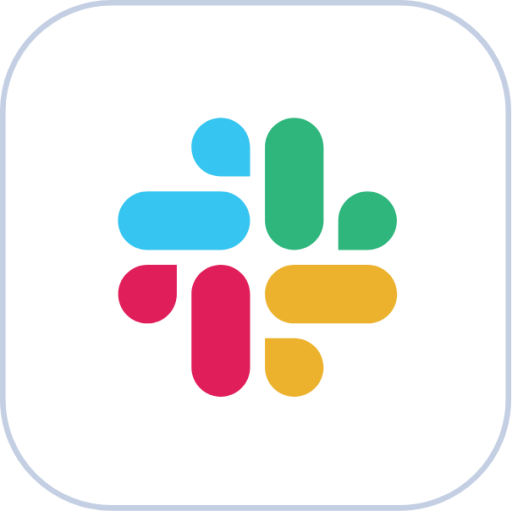In today's data-driven world, you often encounter the need to convert PDF files into editable formats like Google Sheets. Whether you're dealing with financial statements, medical records, or logistics documents, the need for efficient conversion solutions is paramount.
Traditional methods fall short, leaving you frustrated and wasting valuable time. Enter the realm of Vision Language Models (VLMs), revolutionizing the way you handle document conversion.
This guide will walk you through leveraging AnyParser, a cutting-edge tool that harnesses the power of VLMs to seamlessly transform your PDFs into Google Sheets. You'll discover the practical applications of this technology, explore its advantages over conventional OCR methods, and find answers to frequently asked questions. Prepare to unlock new levels of efficiency in your data management processes.
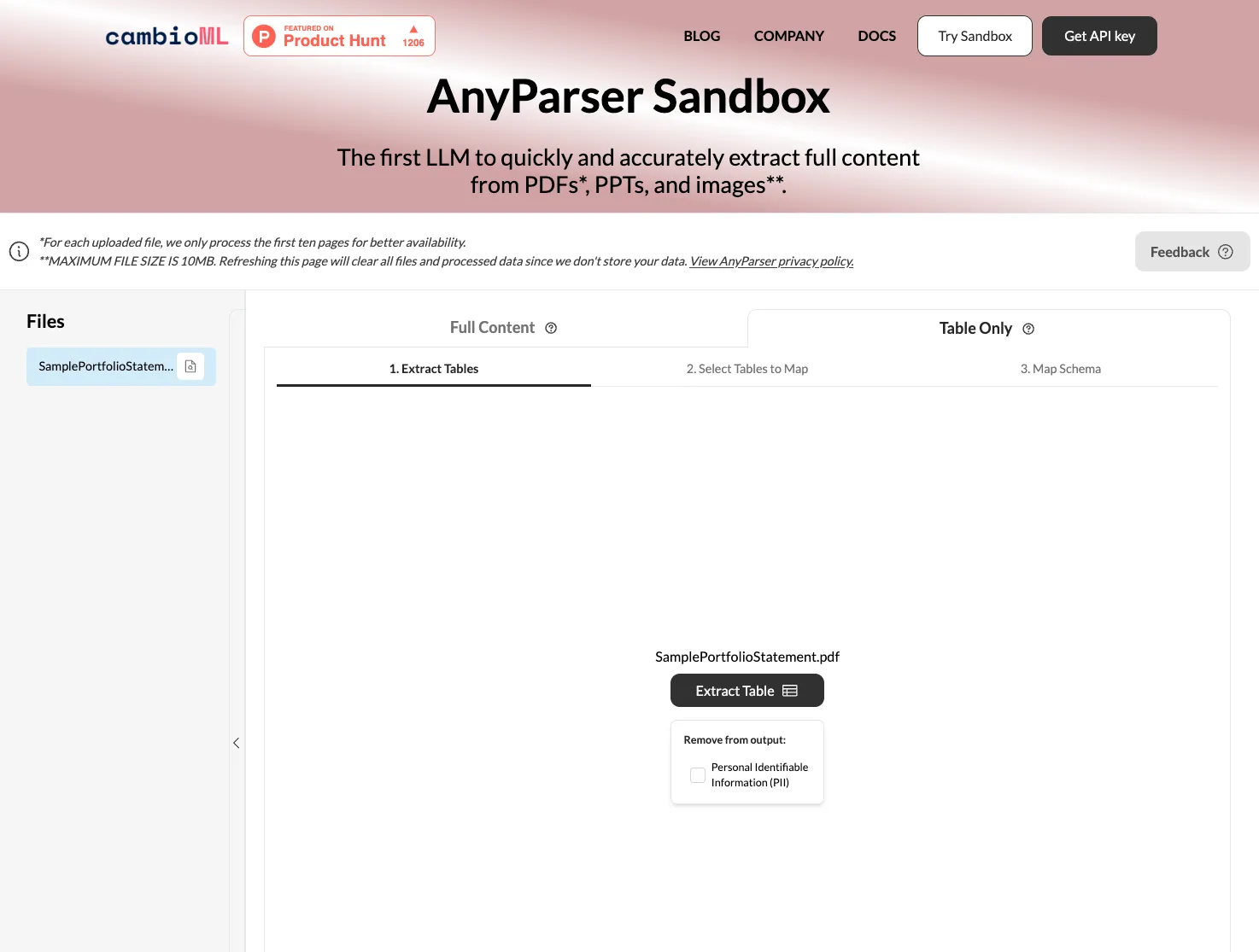
The Growing Need to Convert PDF to Google Sheets
The demand for converting PDFs to Google Sheets is on the rise as businesses and individuals seek to unlock the full potential of their data. This conversion allows for dynamic data analysis and management, streamlining processes across industries.
Overcoming Data Accessibility Challenges
In today's data-driven world, the ability to easily access and manipulate information is crucial. PDFs, while excellent for preserving document formatting, often act as barriers to data analysis. Converting PDFs to Google Sheets unlocks a wealth of possibilities, allowing users to sort, filter, and perform calculations on previously static information.
Streamlining Workflow Efficiency
Many businesses and individuals receive important data in PDF format, such as financial reports, inventory lists, or survey results. The need to manually re-enter this data into spreadsheets is time-consuming and prone to errors. By converting PDFs to Google Sheets, users can automate this process, saving countless hours and ensuring data accuracy.
Enhancing Collaboration and Analysis
Google Sheets offers powerful collaboration features that PDFs simply can't match. Once converted, multiple team members can simultaneously work on the same dataset, add comments, and track changes in real-time. This transformation from static document to dynamic spreadsheet empowers organizations to derive deeper insights and make data-driven decisions more efficiently.
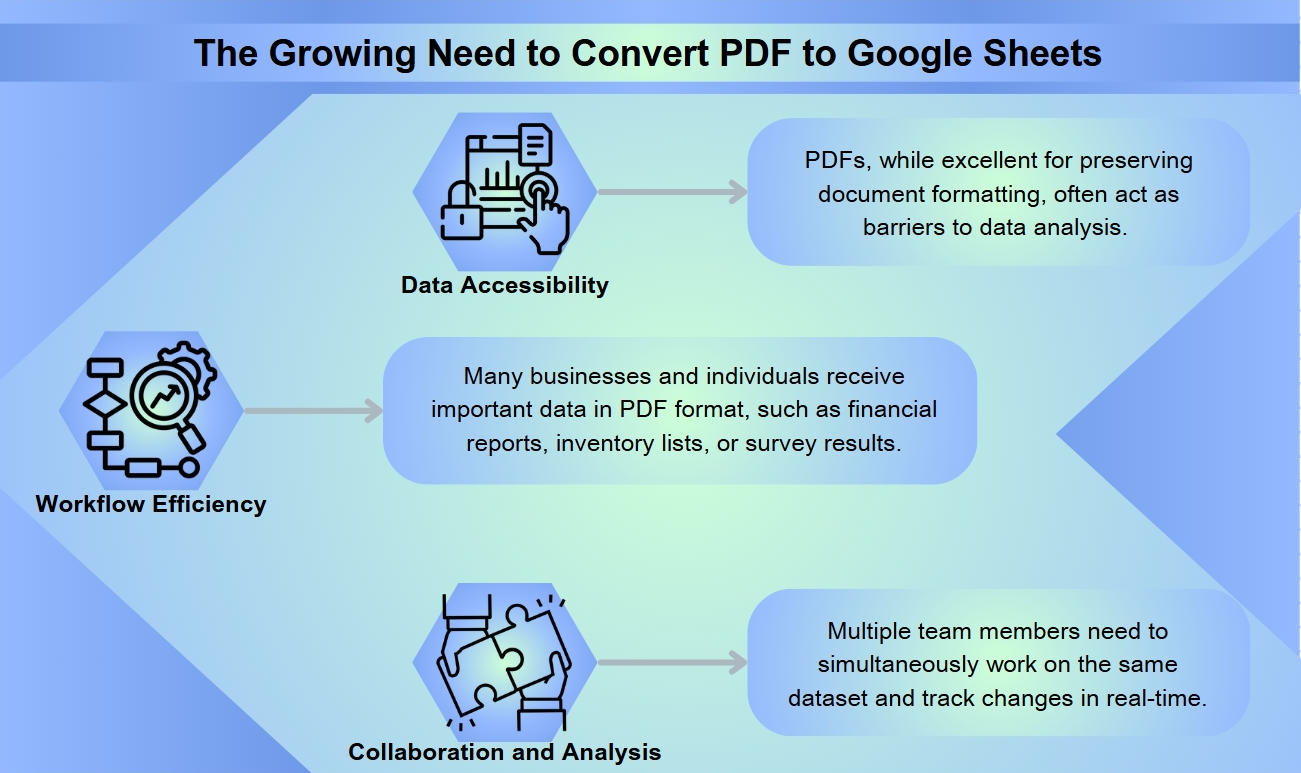
Traditional Methods for Converting PDF to Sheets
Manual Data Entry
Converting PDF files to Google Sheets has traditionally been a labor-intensive process. Many users resort to manually retyping the data, a method that's time-consuming and prone to errors. This approach becomes particularly challenging when dealing with large volumes of data or complex PDF layouts.
Copy and Paste Technique
Another common method involves copying content from the PDF and pasting it into Google Sheets. While this can be faster than manual entry pdf to sheets, it often results in formatting issues. Tables may lose their structure, and text might not align properly, requiring extensive cleanup.
OCR Software
Optical Character Recognition (OCR) software has been a go-to solution for many. These tools attempt to recognize text within PDFs and convert it into editable formats. However, OCR technology can struggle with handwritten text, complex layouts, or low-quality scans. The accuracy of OCR-based conversions can vary widely, often necessitating manual review and correction. Common issues include:
- Inability to accurately interpret low-quality scans or images
- Difficulty handling multi-column layouts and tables
- Challenges in recognizing diverse fonts and languages
- Inconsistency in maintaining the original document structure
Third-Party Converters
Various third-party tools and online converters offer PDF to Google Sheets conversion. While some provide decent results, many have limitations in handling complex PDFs or large files. Users may also face privacy concerns when uploading sensitive documents to these platforms.
Using AnyParser to Convert PDF to Google Sheets Step-by-Step
AnyParser, powered by advanced VLMs, offers a precise and efficient solution for converting PDFs to Google Sheets. Here's how to use AnyParser:
-
Upload Your PDF or Word Document Simply drag and drop your PDF into AnyParser's web interface or paste the PDF screenshot.
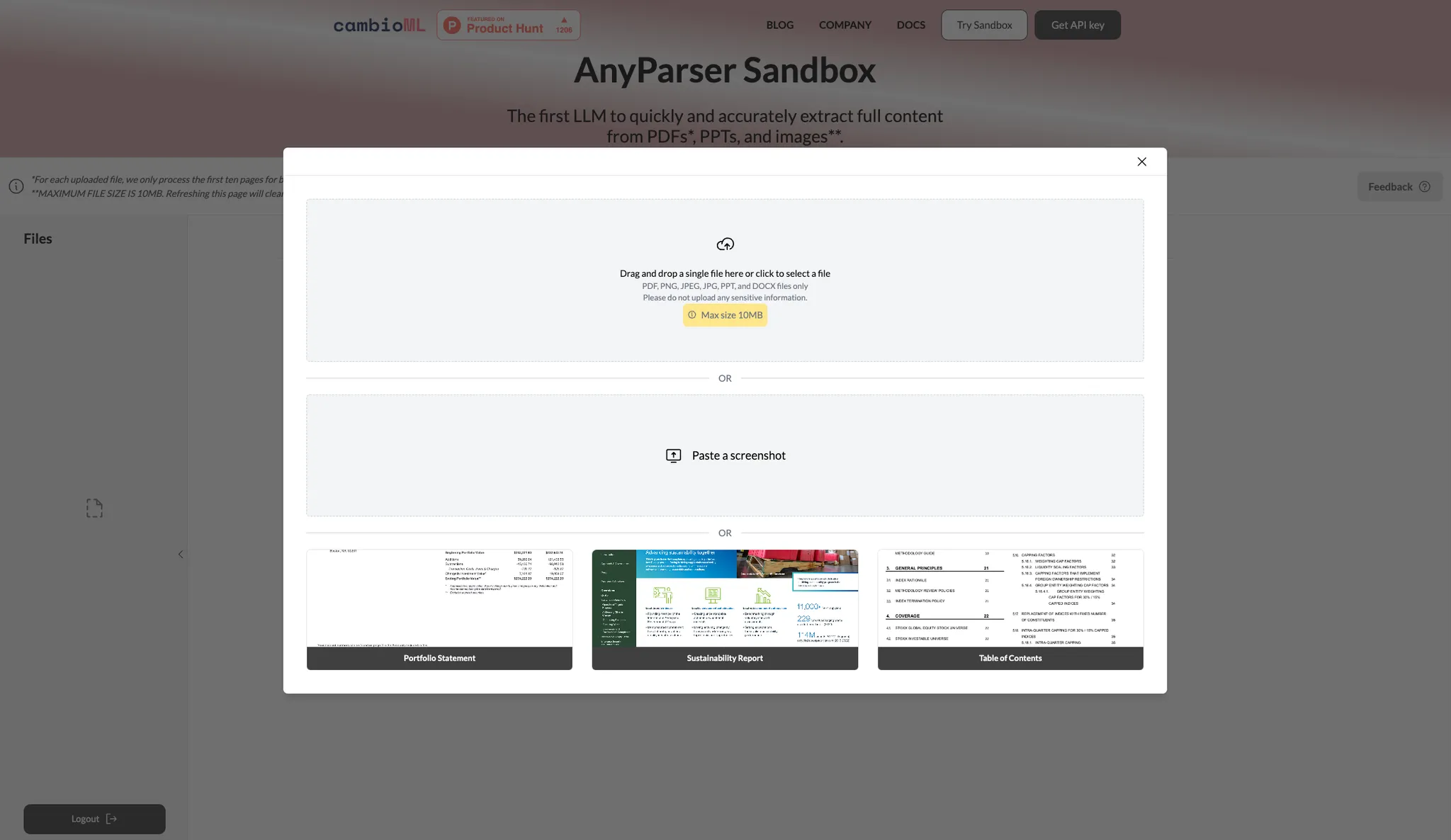
-
Select "Table Only" and Click "Extract" AnyParser's API engine will automatically detect tables in the PDF and extract them with high accuracy. The data is then ready to be exported directly to Google Sheets.
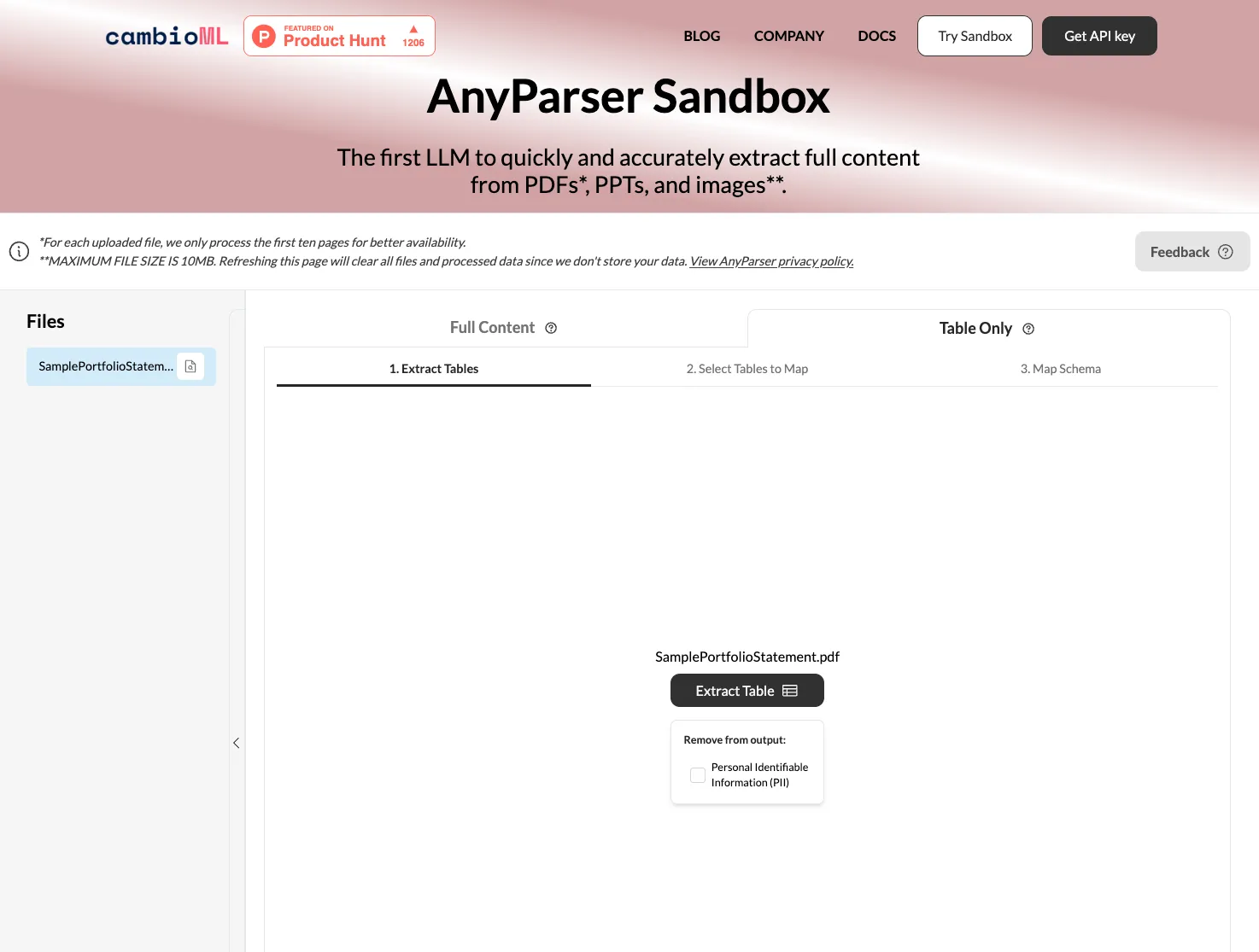
-
Preview and Compare Review the extracted data to ensure it meets your expectations. AnyParser allows you to preview the initial extraction and compare it side-by-side.
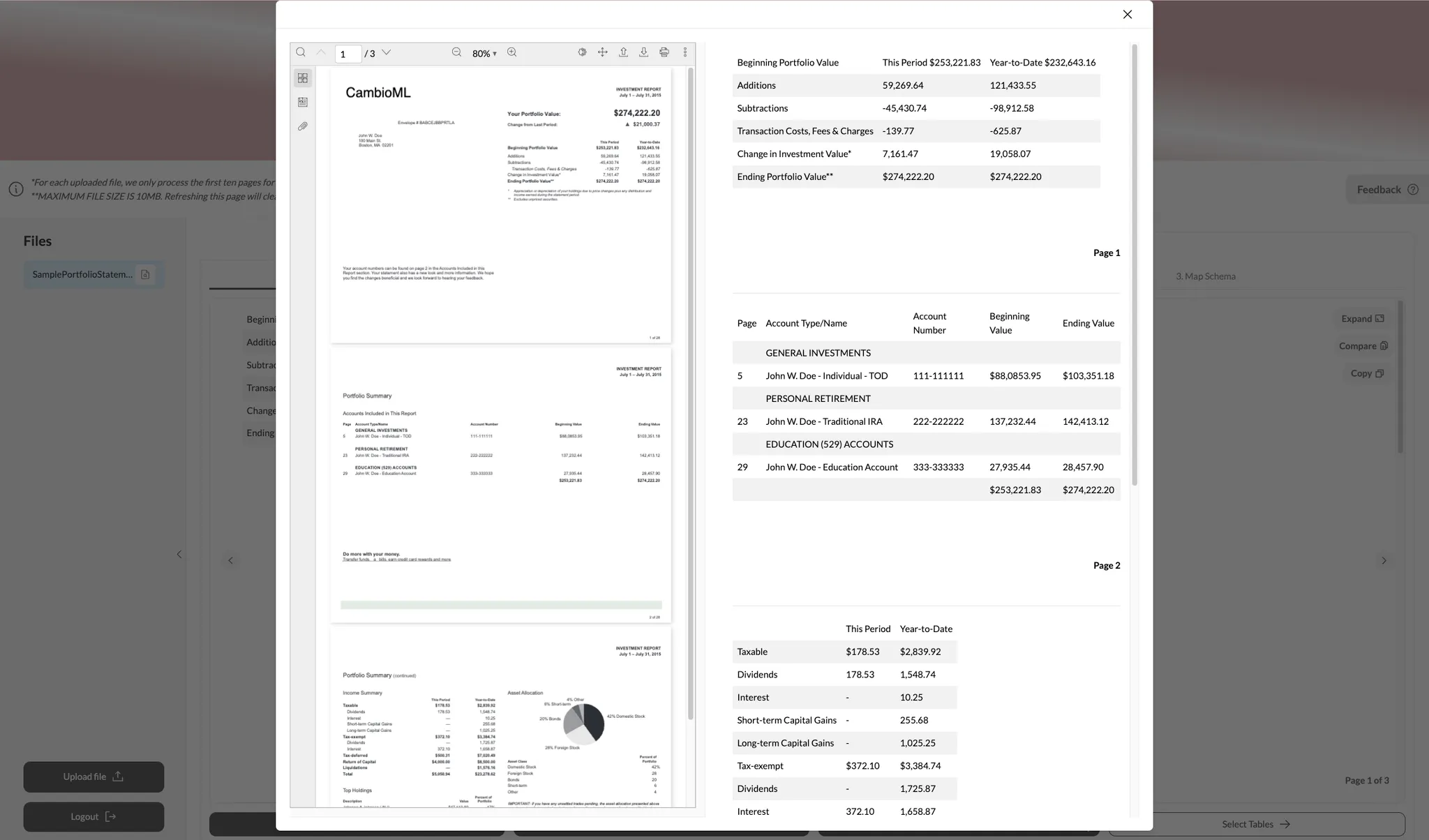
-
Export to Google Sheets Once satisfied, export the data directly to Google Sheets for further analysis and integration into your workflows.
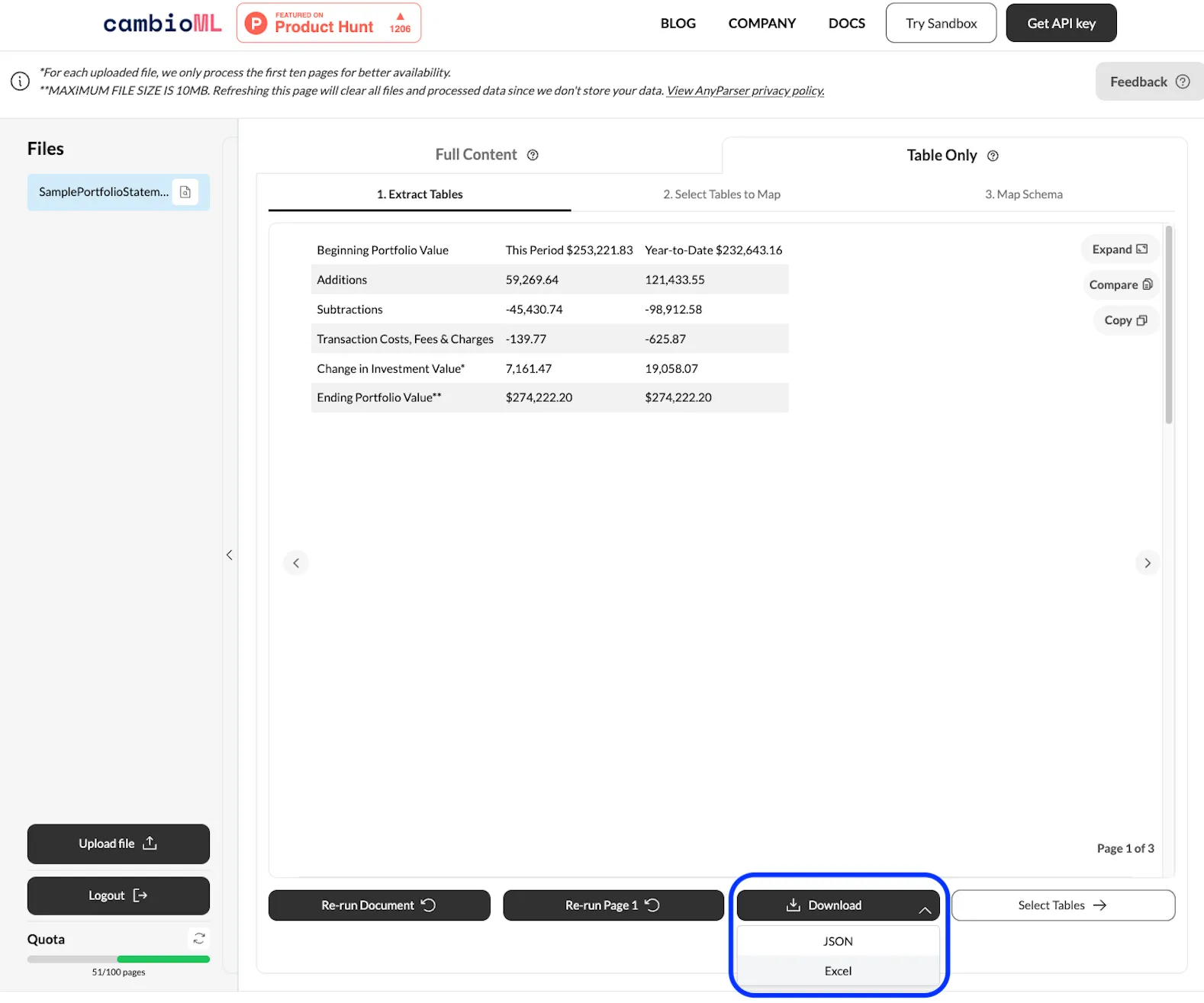
Real-World Applications of VLM for PDF to Google Sheets Conversion
Streamlining Financial Processes
Vision Language Models (VLMs) are revolutionizing the way businesses handle financial data. By converting complex PDF financial statements into Google Sheets, companies can automate data entry and analysis. This transformation allows for real-time financial modeling, budget tracking, and trend identification, empowering decision-makers with up-to-date insights.
Enhancing Academic Research
Researchers and students benefit immensely from VLM-powered PDF to Google Sheets conversion. Large datasets from academic papers, often trapped in PDF format, can be easily transformed into manipulable spreadsheets. This capability facilitates meta-analyses, collaborative studies, and more efficient literature reviews, accelerating the pace of scientific discovery.
Optimizing Inventory Management
Retailers and manufacturers are leveraging VLMs to convert PDF inventory reports into dynamic Google Sheets. This transition enables real-time stock tracking, automated reordering processes, and more accurate demand forecasting. By integrating this data with other business systems, companies can optimize their supply chain and reduce carrying costs.
Improving Healthcare Analytics
In the healthcare sector, VLMs are transforming patient data management. Converting PDF medical records to Google Sheets allows for better patient tracking, trend analysis, and research opportunities. This application not only improves patient care but also contributes to broader public health initiatives and epidemiological studies.
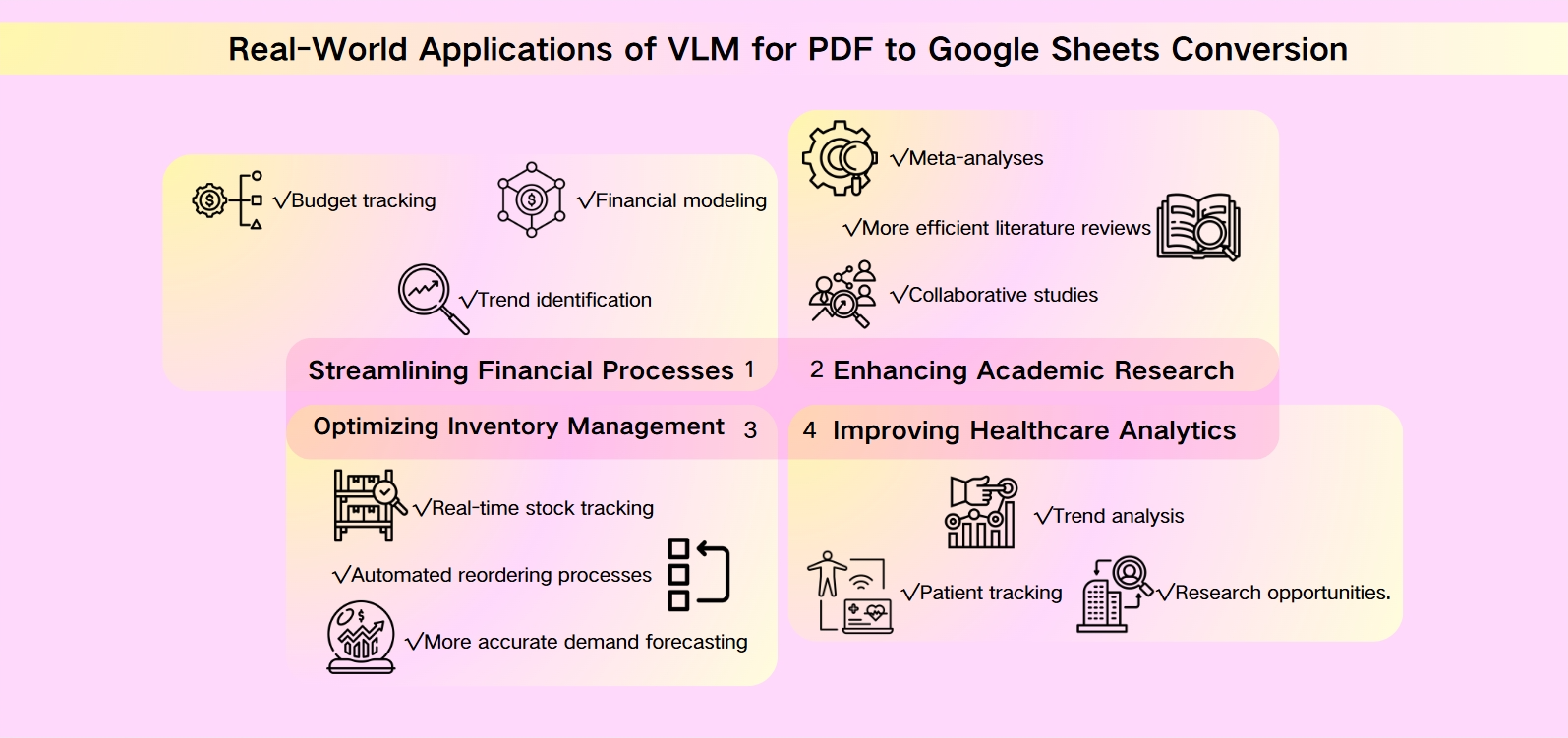
The Advantages of Using Vision Language Models for PDF to Sheets to Overcome OCR Challenges
Enhanced Accuracy and Contextual Understanding
Vision Language Models (VLMs) offer a significant leap forward in PDF-to-Sheets conversion, surpassing traditional Optical Character Recognition (OCR) methods. VLMs excel at interpreting complex layouts, deciphering handwritten text, and understanding context within documents. This advanced capability results in more accurate data extraction, especially for PDFs with intricate designs or poor image quality.
Adaptability to Various Document Types
Unlike OCR, which often struggles with non-standard formats, VLMs demonstrate remarkable flexibility. They can effectively process a wide array of document styles, from invoices and receipts to scientific papers and financial reports. This adaptability eliminates the need for multiple specialized tools, streamlining the conversion process for diverse PDF types.
Intelligent Data Structuring
VLMs go beyond mere text recognition by comprehending the logical structure of documents. This intelligence allows for smarter data organization when converting to Google Sheets. Tables, charts, and grouped information are more likely to be accurately preserved, maintaining the original document's intended layout and relationships between data points.
Continuous Learning and Improvement
Unlike static OCR systems, VLMs benefit from ongoing machine learning advancements. They can be fine-tuned with new data, continuously improving their performance and adapting to evolving document styles. This ensures that the PDF-to-Sheets conversion process becomes increasingly efficient and accurate over time.
VLMs offer several advantages over traditional OCR:
- Interpreting Complex Layouts: VLMs can accurately decipher intricate document structures, preserving layout integrity.
- Contextual Understanding: VLMs grasp the semantic meaning of content, enabling more accurate extraction.
- Multilingual Capability: VLMs handle multiple languages within a document seamlessly.
- Noise Reduction: VLMs filter out noise from low-quality scans or images, ensuring high-quality data extraction.
FAQs on Converting PDF to Google Sheets
Can I convert any PDF to Google Sheets?
Most PDFs can be converted to Google Sheets, but the success rate depends on the PDF's structure and content. Tables, spreadsheets, and structured data typically convert well. However, complex layouts or image-heavy PDFs may pose challenges.
How accurate is the conversion process?
The accuracy of PDF to Google Sheets conversion varies based on the tool used and the PDF's complexity. Vision Language Models (VLMs) like those used in AnyParser offer higher accuracy compared to traditional OCR methods, especially for complex layouts and multilingual content.
Is my data secure during the conversion process?
When using reputable tools like AnyParser, data security is a top priority. However, it's always wise to review the privacy policies of any conversion service you use. Avoid uploading sensitive or confidential information to free, unverified online converters.
How long does the conversion process take?
Conversion time depends on the PDF's size, complexity, and the tool used. Simple, single-page PDFs may convert in seconds, while larger, more complex documents could take several minutes. VLM-powered tools often process files faster than traditional OCR methods.
Conclusion
In conclusion, converting PDF files to Google Sheets has become an essential task for many professionals and businesses. By leveraging the power of Vision Language Models through tools like AnyParser, you can streamline this process and unlock valuable data from your PDF documents. The advantages of VLM technology over traditional OCR methods are clear, offering improved accuracy and flexibility. As you implement these conversion techniques in your workflow, remember to explore the various applications and possibilities they present. With this knowledge at your disposal, you are now equipped to efficiently transform your PDF data into actionable insights within Google Sheets, enhancing your productivity and decision-making capabilities.
Call to Action
Embrace the power of Vision Language Models by trying AnyParser for free to convert your PDFs to Google Sheets at https://www.cambioml.com/sandbox. Get a free consultation on how VLMs can enhance your data extraction workflow.
By connecting with industry leaders like the team at AnyParser, you can accelerate your transition to a more automated, accurate, and insightful data extraction process. Harness this cutting-edge technology to streamline your workflows and unlock new possibilities in document processing.



